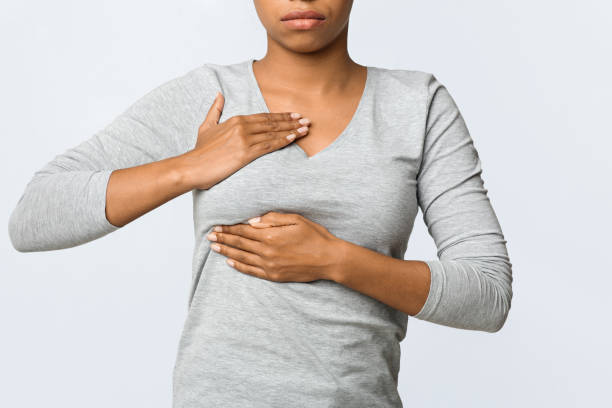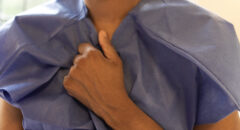
For me, breast pain is one of the first indicators of premenstrual syndrome, which signals the beginning of the menstrual cycle. I even experience a bit of pain after my cycle. A familiar feeling, I usually ride out the discomfort until it ends on its own, which is typically within a few days. As I’ve gotten older, however, I have experienced breast pain outside of my menstrual cycle.
At first, I chalked it up to my poor sleeping positions or the worn and tattered bras I sometimes wear. After I addressed those issues, the pain continued to persist. Alarmed by the last occurrence, I scheduled the earliest appointment I could with my doctor, who then referred me to a breast care specialist. My anxiety shot through the roof.
Why did I need to see a specialist, and was this something serious? I made my appointment and was informed that I would be receiving an ultrasound and a physical exam by the doctor. Although I was worried, the specialists treated me with care and explained each step. The last stop was with the physician, who would perform my breast exam. As she performed the exam, my doctor shared some interesting facts about general breast pain with me.
RELATED: 3 Important Health Reasons Why Your Breasts Itch
Why Do Some Women Experience Breast Pain?
Breast pain, also referred to as mastalgia, can include many uncomfortable sensations that are typically felt in one breast. Both men and women can be affected.
However, with Black women having the highest breast cancer mortality rate, it’s no wonder why Black women (including myself) would be concerned with the sudden onset of breast pain. Thankfully, mastalgia is typically a benign condition that can be addressed with fairly simple solutions.
Breast pain can be caused by trauma, breast size, and other factors. As someone who regularly sleeps on their stomach, and as someone with larger breasts, these causes resonated with me.
Other factors include excessive caffeine usage, medication use, and fatty diets.
RELATED: Eating For Two: A Healthy Breasts Diet
What Can Be Done to Relieve Breast Pain?
So, besides cleaning up my diet and changing my sleep position, what else could I do?
My doctor suggested that I massage my breasts with evening primrose oil, which may decrease the pain. This helped tremendously. As an added benefit, it allowed me to get more familiar with the look and feel of my breasts.
Eventually, I ended up making it a part of my monthly self-breast exam. The combination of the massage paired with
the oil relieved the pain tremendously.
She also mentioned using a warm compress or taking an over-the-counter medicine.
If you are taking a medication that you suspect may be contributing to your breast pain, talk to your doctor about your concerns.
As I got dressed, I felt a deep sense of relief knowing that my breast pain was most likely a benign and treatable condition. As always, my doctor advised me to return if I experience any changes in my breast, such as swelling, skin texture changes, or increased pain in my breasts.
When it comes to your own breast health, get familiar with your breasts, including the way they look and feel. Be sure to note the date and time that you notice any changes as well. Reflect on any lifestyle factors that may contribute to breast pain and make the necessary adjustments.
RELATED: 11 Foods To Feed Your Breasts
If you still have concerns, be sure to talk to your doctor as soon as possible. Breast-related visits can be scary and stressful, but they are essential to optimal breast health.
In fact, it may be beneficial to share your feelings with your doctor before the start of your exam. That way, they will know to take a slower, more gentle approach, which might decrease your anxiety.
Overall, breast pain is usually not an indicator of cancer or other breast-related issues, but it never hurts to check with a medical professional.









